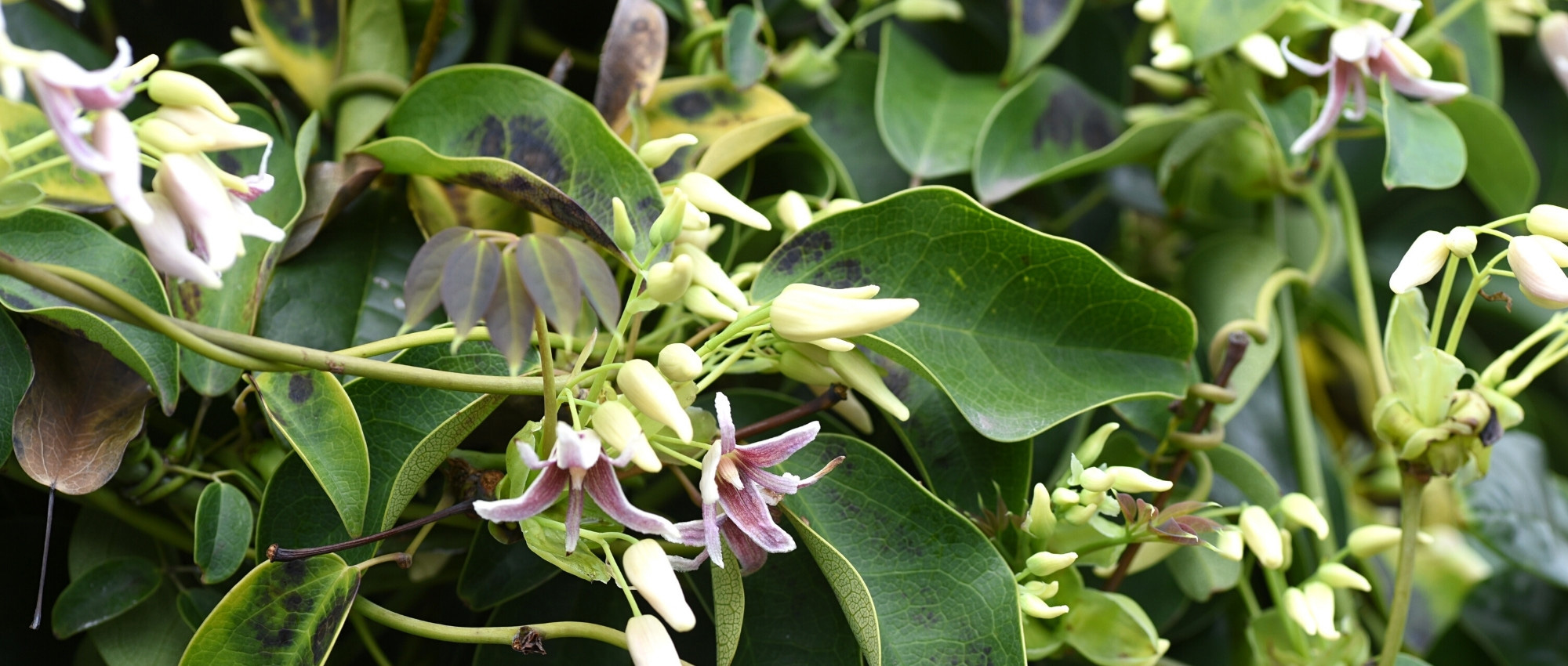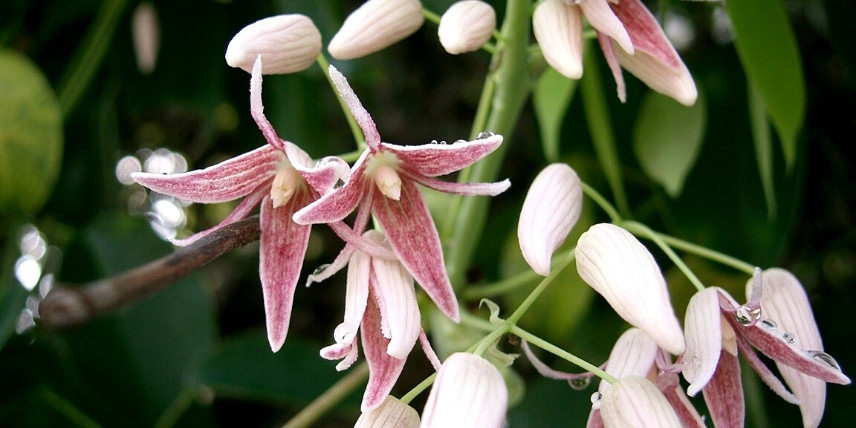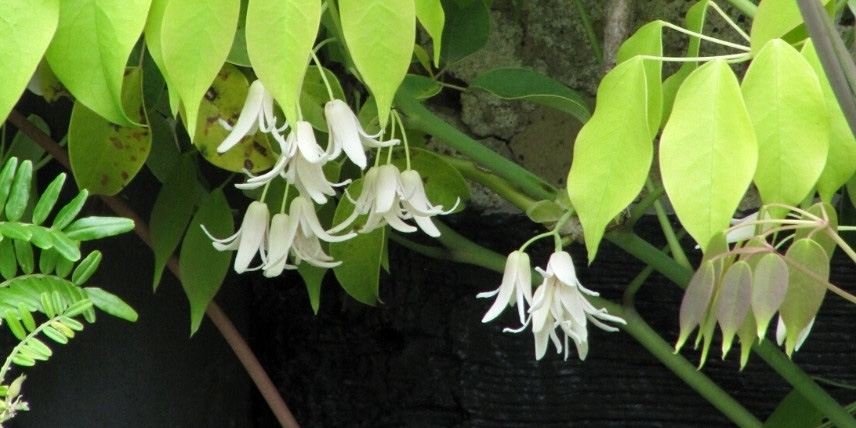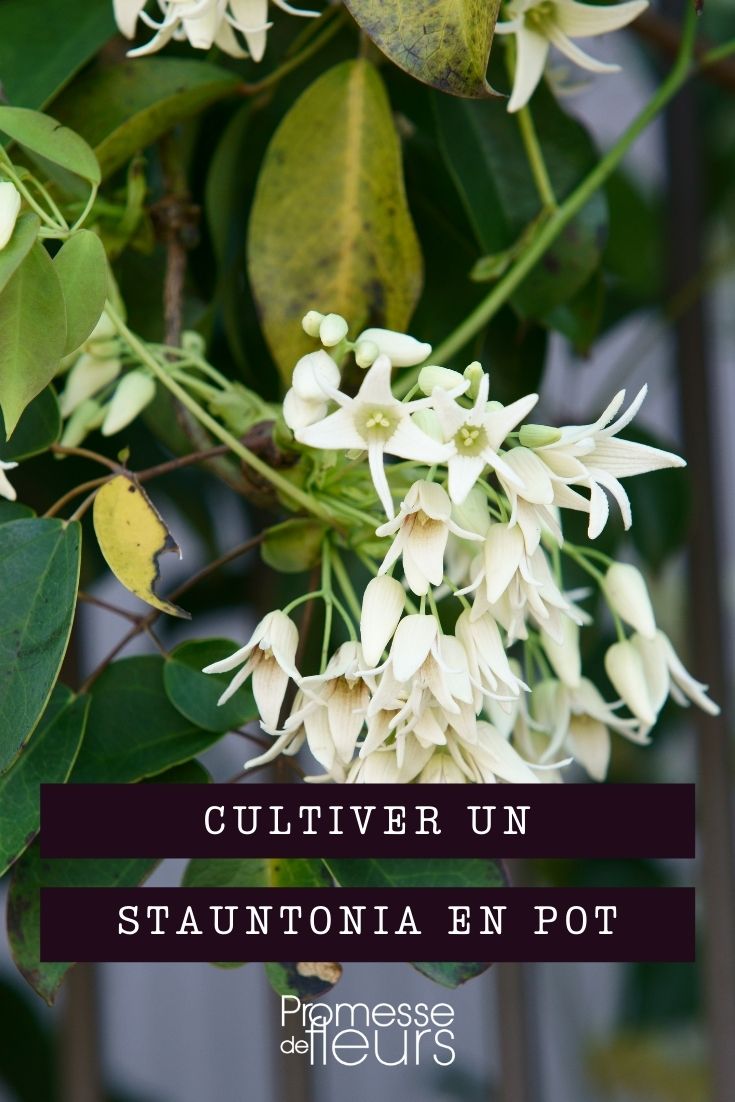
Growing Stauntonia in pots
Our tips for successful cultivation
Contents
Stauntonia is an Asian climbing plant that is still relatively unknown in France but boasts beautiful ornamental qualities! In spring, we appreciate its fragrant bell-shaped flowers, typically pale pink or purple, as well as its lovely palmate and evergreen foliage. In the garden, it thrives in shade, in cool, well-draining, non-calcareous soil, but it can also be grown in a pot, making it easy to bring indoors for winter protection against the cold. It is indeed a somewhat tender plant, sensitive to temperatures below -8 °C.
Discover in this guide all our tips for growing Stauntonia in a pot: which substrate to choose, how to plant it, where to place it, and how to care for it.
What type of pot to choose?
To grow Stauntonia, you can opt for a plastic pot: these pots are lightweight, economical, and better at retaining moisture and heat. Terracotta pots are also a good option: although they are slightly more expensive and heavier, they are more aesthetically pleasing, more environmentally friendly, and permeable to air and water, allowing for better aeration of the root system. The downside is that the substrate dries out a bit faster, and Stauntonia will need to be watered more frequently.
Whether you choose a plastic or terracotta pot, the most important thing is to ensure that the pot has drainage holes at the bottom to allow water to escape.
As for its dimensions, we recommend selecting a pot with a diameter and depth of at least 40 cm. It should, in any case, be slightly larger than the original pot.
What substrate to use?
Stauntonia thrives in rich, humus-bearing, cool, and well-draining soils. For drainage, it is important to first place a layer of clay balls, gravel, or broken pots at the bottom of the pot. This will allow water to drain away more easily. You can then plant the Stauntonia in a mixture consisting of 1/3 potting soil, 1/3 garden soil, and 1/3 well-decomposed compost.

Stauntonia hexaphylla (photo KENPEI)
Discover other Stauntonia
View all →Available in 1 sizes
Available in 1 sizes
When and how to plant?
You can plant Stauntonia in a pot in spring, around April, or in autumn (September-October). Avoid intervening during frost or extreme heat.
- Start by soaking the root ball in a basin filled with water to rehydrate it.
- Take a pot and place a layer of gravel or clay balls at the bottom, about 5 cm thick, to improve drainage.
- Then add a mixture of 1/3 potting soil, 1/3 garden soil, and 1/3 well-decomposed compost.
- Gently remove the Stauntonia from its original pot and plant it in the new pot, ensuring it is centred.
- Add a bit of substrate to cover the root ball, then lightly firm it down.
- Water generously.
- You can add a small layer of mulch on the surface of the potting soil. This will help keep the substrate fresh for longer while insulating the roots from the cold in winter.
- Guide the branches onto their support to help them cling.
Then place the pot in a bright but ideally semi-shaded spot, sheltered from the scorching sun that could damage its foliage. For example, you can set it up on your terrace, in a courtyard, or on a balcony. We recommend placing Stauntonia near the house and in areas of passage to enjoy its fragrant flowering.
You can pair it with a Japanese maple, ferns, bamboo, or grasses like Hakonechloa macra, or even Nandina domestica. In any case, remember to place Stauntonia at the foot of a support for it to climb!

Stauntonia hexaphylla (photo Leonora Enking)
How to care for a Stauntonia in a pot?
Watering
From spring to autumn, we recommend watering the Stauntonia once or twice a week. The substrate should remain slightly moist without becoming waterlogged (as this could cause the root system to rot). Be especially careful to ensure that water does not stagnate in the saucer. However, during heatwaves, the Stauntonia may require more frequent watering, and conversely, in winter, we advise reducing watering.
Finally, if your water is hard, it is better to water with rainwater.
Fertilisation
From spring to autumn, the Stauntonia will appreciate it if you provide a little liquid fertiliser, about once a month, which you will dilute in the watering water. In winter, stop fertiliser applications.
You can also use solid fertiliser (in the form of sticks or granules), which will release mineral elements gradually with each watering.
Wintering
The Stauntonia is sensitive to temperatures below –8 °C: if you live in a region with a cool climate, do not hesitate to bring the pot under cover in autumn to protect it from the cold, and take it out again on your terrace in spring.
In milder regions, where the risk of frost is low, the Stauntonia can remain outdoors all year round.
Growth and staking
The Stauntonia is a climbing plant: remember to install a support for it to climb by wrapping its stems around it. You can guide it, for example, on a pergola, a gazebo, a fence, a tree, or against the wall of your house (by installing a trellis).
It does not really need to be pruned, but as it is a vigorous liana that grows quickly, you can limit its development by performing light pruning after flowering.
Repotting
We recommend repotting the Stauntonia every two years, at the beginning of spring, placing it each time in a slightly larger pot. This allows for substrate renewal and gives it more space to develop its root system.
- Subscribe!
- Contents


































Comments